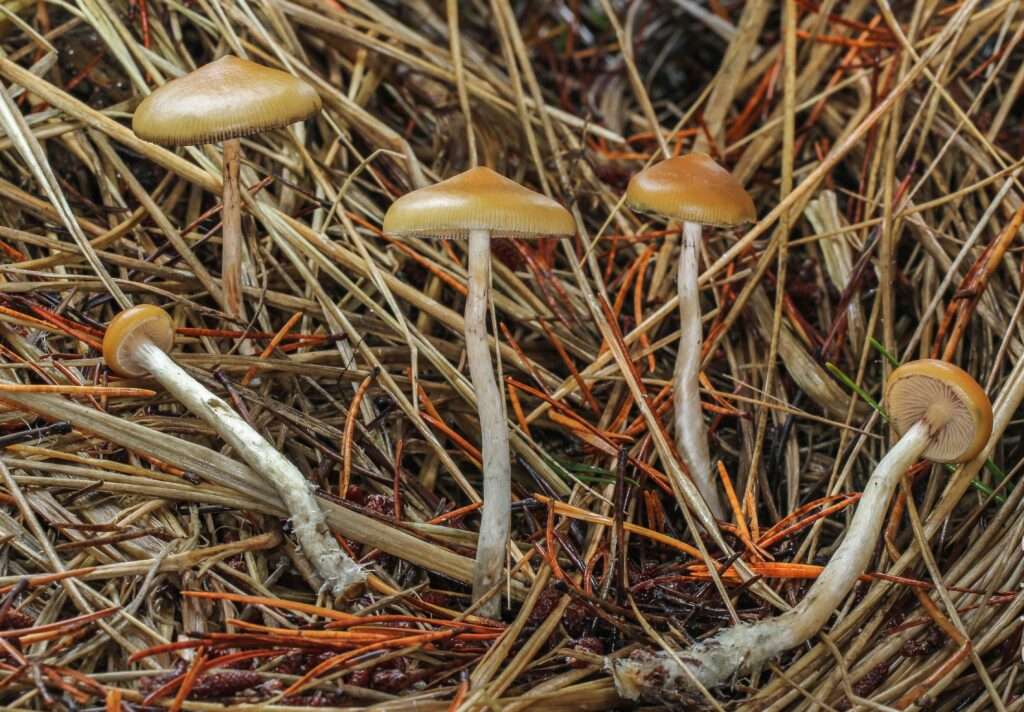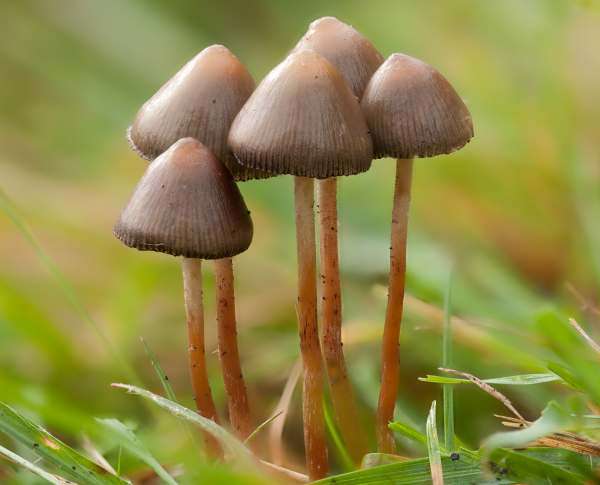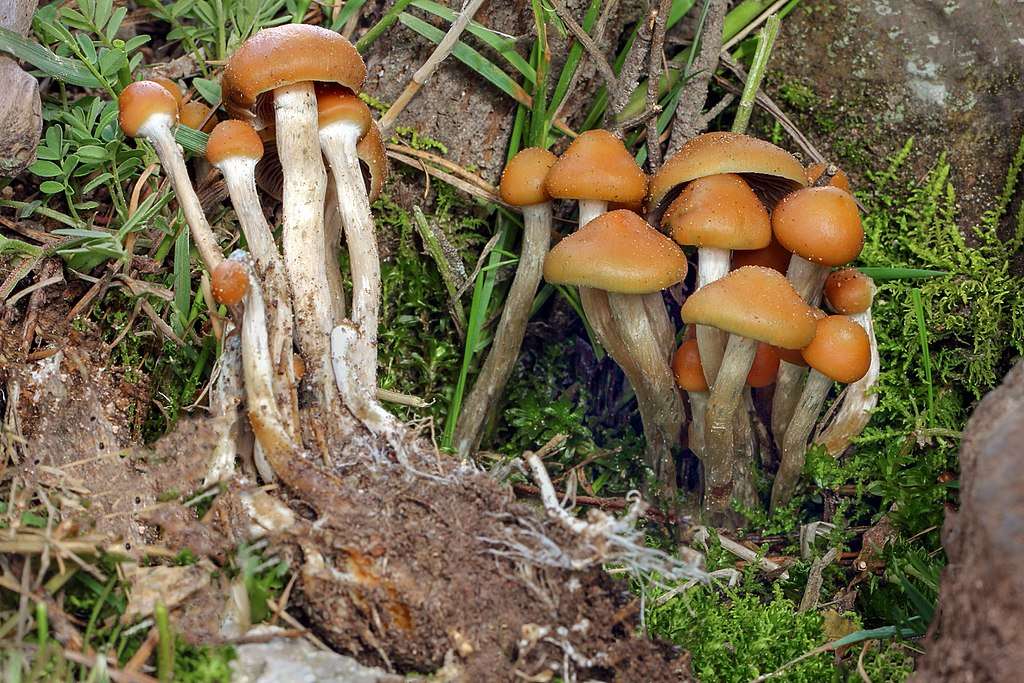
Scientific name
Psilocybe azurescens
Description
The cap of Psilocybe azurescens ranges in diameter from 1.2 to 3.9 inches. It has a conical or convex form at first, but as it grows, it becomes wider and finally flattens out. It features a definite, large center hump (umbo), and when wet, its surface is silky, shiny, and sticky. The cap’s color varies from chestnut to ochraceous brown to caramel, with dark blue or bluish-black spots. When it dries, it turns pale straw, and when it is damaged, it turns blue. The edge of the cap is transparent.
The stem is 3.5 and 7.9 inches in length and 0.1 and 0.2 inches in thickness. It is typically white and smooth in texture, although it can age to a dismal brown. When the mushroom grows, the stem becomes hollow and is formed of a flexible, rubbery substance. The base of the stem is thicker and frequently curled, with a white, fluffy growth of mycelium, occasionally with blue colors.

Habitat
Psilocybe azurescens is endemic to North America’s Pacific Northwest region, notably the states of Oregon and Washington, but it has also been recorded in California. It grows wild in coastal dune grasslands, particularly in sandy soils and wood chips.
Uses/Importance
Azurescens have a harsh taste but are normally odorless or have a slight starch flavor. It’s frequently mixed into meals or beverages to make them more appealing.
They create vivid and severe visual hallucinations comparable to other “magic mushrooms” due to their higher psilocybin and psilocin concentration. Azurescens frequently generate extreme euphoria, drastic aural alterations, and temporal dilation. These potent effects make its journeys extremely ethereal. Because of the vividness and severity of the delusions, azurescens is more prone to elicit anxiety than other mushrooms.
Table





